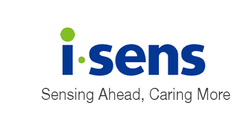
What Is Hypotension?
When talking about blood pressure, hypertension (i.e., high blood pressure) is often at the center of the discussion.1 However, the often overlooked condition of hypotension can also greatly impact health. Hypotension is at the other end of the spectrum of blood pressure, describing low blood pressure. Although there is no standard value that defines hypotension, it is often describes as blood pressure that is lower than 90 mm Hg/60 mm Hg.2 Hypotension usually comes without symptoms and may be benign, but in some cases can become harmful to health.
What Are the Different Causes of Hypotension?
Blood pressure is determined by two main factors: cardiac output and total peripheral vascular resistance.2 In other words, how much blood your heart can pump and how much resistance your blood vessels offer determine blood pressure. Anything that affects any of these elements can disturb blood pressure. Certain medications can decrease heart rate or cardiac stroke volume (i.e., the amount of blood ejected by the heart) which can cause hypotension. Other acute and life-threatening conditions such as traumatic blood loss, anaphylactic allergic reactions, and obstruction of blood vessels can also lead to hypotension. The most common form of hypotension, however, is orthostatic hypotension, caused by disruption to the nervous system and mild hypovolemia from dehydration.1,2
The Most Common Form: Orthostatic Hypotension
Orthostatic hypotension describes sustained low blood pressure when a person moves from lying down or sitting to a standing position.3 It is defined as a reduction in systolic blood pressure of >20 mm Hg or reduction in diastolic blood pressure of >10 mm Hg within 3 minutes of standing up. Orthostatic hypotension is strongly correlated with age, with its prevalence being lower than 5% in those below 50 years old then rising to 20% in those older than 70 years old. It is thought to be caused by the dysfunction of a part of the nervous system called the autonomic nervous system. Normally, blood vessels would slightly constrict, and heart rate would slightly increase to maintain blood pressure when a person moves from a lying or sitting to a standing position. In orthostatic hypotension, the nervous system does not function properly at various levels and not allow for appropriate compensation.
What Are the Symptoms of Hypotension?
Hypotension usually comes with very few or no symptoms, and thus can easily be overlooked.1 Lightheadedness and dizziness are the most common symptoms. Other symptoms may be felt because of the underlying issue rather than low blood pressure itself. The below describes possible symptoms of hypotension:3
- Lightheadedness
- Dizziness
- Fatigue
- Coat hanger pain (pain in neck, head, and shoulders) in case of orthostatic hypotension
- Fainting
- Falls
How Is Hypotension Managed?
Management of hypotension greatly differs based on its cause. Acute and life-threatening causes of hypotension require immediate treatment of the underlying issue to prevent complications or loss of life. In the case of orthostatic hypotension, both nonpharmacological and pharmacological methods exist to combat low blood pressure.3 Avoiding prolonged inactivity, sudden changes in posture, and common triggers (e.g., alcohol, heat exposure, dehydration) can help prevent sudden drops in blood pressure. Additionally, drinking sufficient water, crossing legs when standing up, and contracting abdominal and leg muscles can also help. When these nonpharmacological methods are ineffective, various types of medications may be considered to improve symptoms and functionality.
|
References: |
(Disclaimer)
The content of this article is intended to provide a general information and knowledge on the subject matter. The views expressed in newsletters, articles, and blogs in the i-SENS USA website are not necessarily those of i-SENS Incorporated, i-SENS USA Incorporated or our publishers. Medical or nutritional information on i-SENS USA website is not intended to replace professional medical advice – you should always consult a specialist with any questions about your specific circumstances.





Add a comment